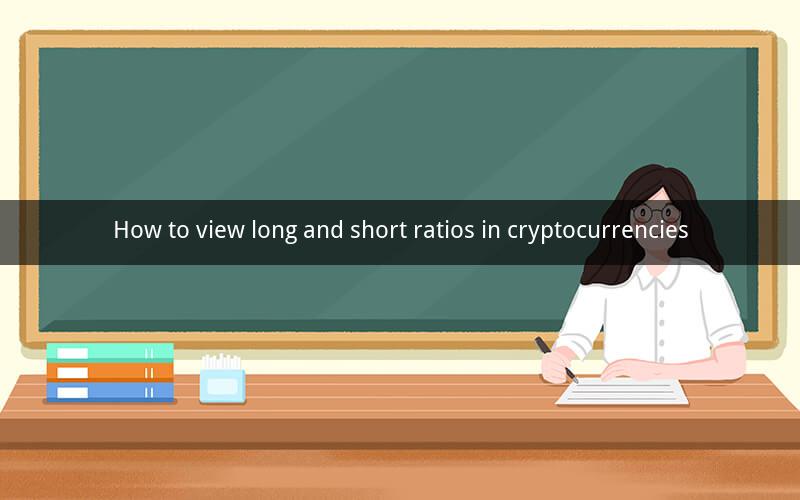
Table of Contents
1. Introduction to Long and Short Ratios
2. Understanding Long and Short Positions
3. Importance of Long and Short Ratios in Cryptocurrencies
4. Calculating Long and Short Ratios
5. Analyzing Long and Short Ratios
6. Using Long and Short Ratios for Trading
7. Risks and Limitations of Long and Short Ratios
8. Conclusion
1. Introduction to Long and Short Ratios
Long and short ratios are financial metrics used to measure the sentiment of investors in a particular market, including cryptocurrencies. It provides insights into the number of investors holding long positions (buying) versus short positions (selling) in a given asset. This information is crucial for traders and investors to make informed decisions.
2. Understanding Long and Short Positions
A long position is when an investor buys an asset with the expectation that its value will increase over time. Conversely, a short position is when an investor sells an asset that they do not own, borrowing it from a broker and selling it in the hope that its value will decrease.
3. Importance of Long and Short Ratios in Cryptocurrencies
Long and short ratios play a significant role in cryptocurrencies due to their high volatility and speculative nature. They help traders and investors gauge market sentiment, identify potential trends, and make more informed trading decisions.
4. Calculating Long and Short Ratios
To calculate the long and short ratios, you need to gather data on the number of long and short positions in a particular cryptocurrency. The formula for calculating the long ratio is as follows:
Long Ratio = (Number of Long Positions) / (Number of Short Positions)
Similarly, the formula for calculating the short ratio is:
Short Ratio = (Number of Short Positions) / (Number of Long Positions)
5. Analyzing Long and Short Ratios
Analyzing long and short ratios can provide valuable insights into market sentiment. Here are some key points to consider:
- A high long ratio indicates that more investors are holding long positions, suggesting a bullish sentiment.
- A high short ratio suggests that more investors are holding short positions, indicating bearish sentiment.
- A significant shift in long and short ratios can signal a potential trend reversal or continuation.
6. Using Long and Short Ratios for Trading
Traders can use long and short ratios to inform their trading strategies. Here are some examples:
- If the long ratio is high, it may be a good opportunity to enter a long position, as the market may continue to rise.
- If the short ratio is high, it may be a good opportunity to enter a short position, as the market may continue to fall.
- Traders can also use long and short ratios to identify potential reversal points, allowing them to enter or exit positions at favorable prices.
7. Risks and Limitations of Long and Short Ratios
While long and short ratios can be a valuable tool, they also have risks and limitations:
- Market sentiment can change rapidly, and long and short ratios may not always reflect the true market sentiment.
- Manipulation and false signals can occur, making it crucial to cross-reference long and short ratios with other indicators.
- Cryptocurrencies are highly speculative, and long and short ratios may not be as reliable as they are in more mature markets.
8. Conclusion
Long and short ratios are an essential tool for analyzing market sentiment in cryptocurrencies. By understanding and utilizing these ratios, traders and investors can gain valuable insights into market trends and make more informed decisions. However, it is important to be aware of the risks and limitations associated with long and short ratios to avoid potential pitfalls.
Questions and Answers:
1. What is a long position in cryptocurrencies?
A long position is when an investor buys a cryptocurrency with the expectation that its value will increase over time.
2. What is a short position in cryptocurrencies?
A short position is when an investor sells a cryptocurrency that they do not own, borrowing it from a broker and selling it in the hope that its value will decrease.
3. How can long and short ratios be used to identify potential trends?
Long and short ratios can help identify potential trends by analyzing the sentiment of investors in a particular cryptocurrency.
4. What does a high long ratio indicate in the cryptocurrency market?
A high long ratio suggests that more investors are holding long positions, indicating a bullish sentiment in the market.
5. What does a high short ratio indicate in the cryptocurrency market?
A high short ratio indicates that more investors are holding short positions, suggesting bearish sentiment in the market.
6. How can traders use long and short ratios to inform their trading strategies?
Traders can use long and short ratios to identify potential entry and exit points for their trading strategies, based on market sentiment.
7. What are the risks associated with long and short ratios?
The risks include rapid changes in market sentiment, manipulation, and the speculative nature of cryptocurrencies.
8. How can traders cross-reference long and short ratios with other indicators?
Traders can cross-reference long and short ratios with other indicators, such as moving averages or volume, to gain a more comprehensive view of the market.
9. Are long and short ratios more reliable in mature markets compared to cryptocurrencies?
Long and short ratios may be more reliable in mature markets due to lower volatility and more established investor sentiment.
10. Can long and short ratios be manipulated in the cryptocurrency market?
Yes, long and short ratios can be manipulated in the cryptocurrency market, making it crucial to cross-reference with other indicators and exercise caution when using them.